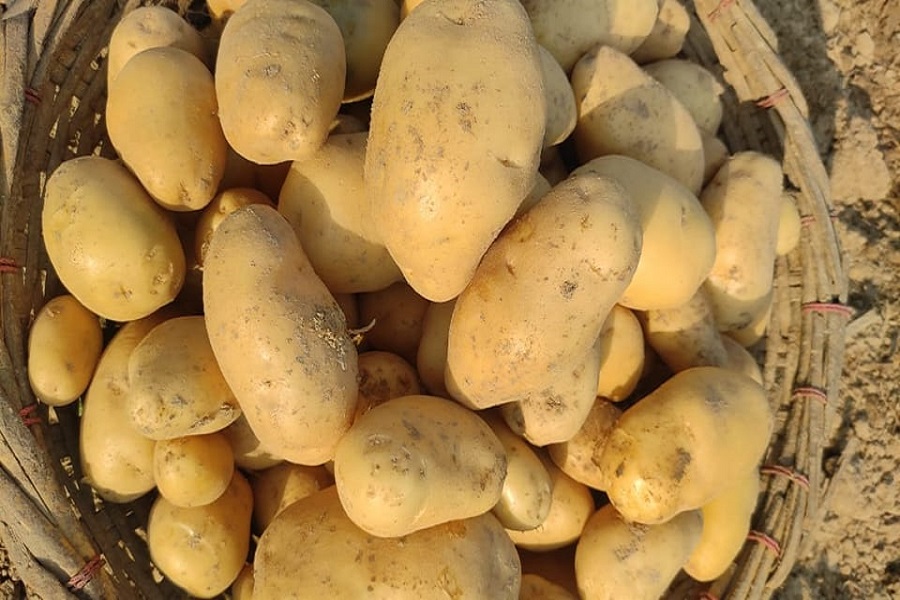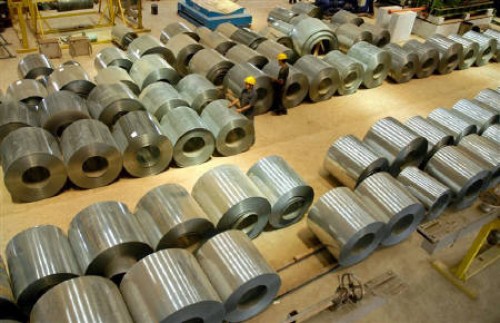Gold trading range for the day is 70175-71445 - Kedia Advisory

Follow us Now on Telegram ! Get daily 10 - 12 important updates on Business, Finance and Investment. Join our Telegram Channel
Gold
Gold prices saw a modest increase of 0.39%, settling at 70912, driven by profit booking amid traditional challenges from a stronger U.S. dollar and higher interest rates. However, the downside remained limited as Asian central banks continued to demonstrate strong demand for the precious metal. The unexpected surge in U.S. job growth in March raised questions about the timing of potential rate cuts, with traders pricing in a 52% probability of a 25 basis point cut in June, according to CME Group data. UBS raised its year-end target for bullion to $2,250 per ounce, citing firmer demand and the likelihood of increased exchange-traded-fund (ETF) buying ahead. COMEX gold speculators also increased their net long positions, signaling confidence in the market's upward trajectory. Notably, China's central bank added 160,000 troy ounces of gold to its reserves in March, contributing to the sustained rise in gold prices. China's consistent accumulation of gold over the past 17 months reflects central banks' continued belief in the metal's value. On the technical front, the market witnessed short covering, with a decrease in open interest and a corresponding increase in prices. Support for gold is identified at 70540, with resistance at 71175. A breakthrough above resistance levels could lead to further price appreciation, with potential testing of levels around 71445. Conversely, a drop below support may see a test of lower levels around 70175.
Trading Ideas:
* Gold trading range for the day is 70175-71445.
* Gold gains as geopolitical tensions and a weak dollar supported prices
* Data showed U.S. job growth blew past expectations in March
* China's central bank increased its gold holdings in March
Silver
Silver demonstrated strength in its price performance, settling up by 1.25% at 81875, despite soaring US Treasury yields following upbeat Nonfarm Payrolls (NFP) data, which diminished speculation for a Federal Reserve rate cut in June. The metal benefited from renewed investor interest in ETFs, with significant inflows recorded in the last fortnight, contributing to a 3% increase in total silver ETF holdings year-to-date. Additionally, positive manufacturing data from China, a top consumer of silver, along with projections for growing solar installations, boosted the metal's industrial demand outlook. However, the upside was capped by eased geopolitical tensions in the Middle East and reduced expectations of a Fed rate cut in June after the stronger-than-expected US jobs report. Traders await upcoming US inflation data and FOMC minutes for further clarity on the Fed's monetary policy trajectory. India's record-high silver imports in February, surging by 260%, driven by lower duties and increased purchases from the United Arab Emirates (UAE), indicate robust demand from the world's largest silver consumer. The significant increase in imports, surpassing figures for the entire year of 2023 within the first two months of 2024, underscores India's growing appetite for silver. Technically, the market witnessed short covering, with a drop in open interest by -1.26%, despite a significant price increase of 1012 rupees. Silver is currently supported at 81030, with potential further testing at 80190, while resistance is anticipated at 82410, with a potential breakout leading to testing of 82950.
Trading Ideas:
* Silver trading range for the day is 80190-82950.
* Silver price gains despite traders pare Fed rate cut bets for June.
* Fed Bowman said current conditions are not appropriate for lowering borrowing rates.
* Silver benefited from the re-entry of investors in the ETF's market, with 10.7 moz of inflows in the last fortnight.
Crude oil
Crude oil prices experienced a downturn, settling at 7179, marking a decline of -1.44% yesterday. This drop can be attributed to the easing of tensions in the Middle East, particularly with Israel withdrawing troops from Southern Gaza and the resumption of peace talks between Israel and Hamas in Egypt. These developments have alleviated concerns that previously fueled a rally in oil prices. On the supply side, Saudi Arabia's decision to raise official selling prices for all crude grades to Asia in May reflects tightening global supply conditions. However, disruptions such as the fire on a Pemex-operated offshore platform in Mexico, resulting in casualties, underscore ongoing challenges in the oil market. In terms of demand, stronger-than-expected US jobs data have bolstered optimism about the demand outlook in the world's largest oil consumer. Additionally, upcoming inflation readings in the US and China are awaited by investors for further insight into economic trends. The Energy Information Administration's report indicated mixed inventory data, with crude stocks rising by 3.2 million barrels, contrary to analysts' expectations of a drawdown. However, gasoline and distillate inventories saw declines. From a technical standpoint, the market is currently experiencing long liquidation, evidenced by a drop in open interest by -34.22%. Prices are down -105 rupees, with support levels at 7112 and potential resistance at 7248. A breakthrough above this resistance could lead to a testing of 7316 levels.
Trading Ideas:
* Crudeoil trading range for the day is 7044-7316.
* Crude oil fell amid the easing of Middle East tensions.
* Israel and Hamas also restarted peace talks in Egypt, easing tensions.
* Saudi Arabia raised official selling prices for all crude grades to Asia in May as global supply tightened.
Natural gas
Natural gas saw a notable increase of 1.72%, settling at 154.1, driven by forecasts indicating higher demand than previously anticipated and a decline in output as producers scale back drilling activities in response to plummeting gas prices earlier this year. Despite projections for milder weather and reduced demand in the coming weeks, prices continued to rise, supported by decreased gas production and ongoing concerns about ample storage levels. According to financial firm LSEG, gas output in the Lower 48 US states decreased to 99.4 billion cubic feet per day (bcfd) in April, down from 100.8 bcfd in March. This decline in production contrasts with a monthly record high of 105.6 bcfd in December 2023. Meteorologists forecast warmer-than-normal weather across the Lower 48 through at least April 23, which is expected to lead to a reduction in gas demand from 101.2 bcfd this week to 96.4 bcfd next week. Additionally, flows to major US liquefied natural gas (LNG) export plants have decreased to 12.5 bcfd in April, down from 13.1 bcfd in March. This decline reflects adjustments in global LNG markets amid evolving supply and demand dynamics. From a technical standpoint, the market witnessed short covering, with a drop in open interest by -4.58% despite a price increase of 2.6 rupees. Natural gas is currently supported at 148.7, with potential further testing at 143.3, while resistance is anticipated at 157.1, with a potential breakthrough leading to testing of 160.1.
Trading Ideas:
* Naturalgas trading range for the day is 143.3-160.1.
* Natural gas edged up on forecasts for more demand than previously expected.
* Support also seen amid continued drop in output as producers reduce drilling activities.
* Gas output in Lower 48 U.S. states fell to 99.4 billion cubic feet per day in April, down from 100.8 bcfd in March.
Copper
Copper experienced a robust increase of 1.83%, settling at 816.05, driven by demand from momentum-following funds, strong German industrial data, and a rally in other commodities. The surge in copper prices was supported by positive manufacturing data from China, expectations of interest rate cuts in the US and Europe, and elevated sentiment towards commodities in general. Rebound in US manufacturing, along with encouraging Chinese manufacturing PMIs, challenged concerns about a downturn in the sector, which are significant for copper demand. On the supply side, disruptions in major African mines compounded previous setbacks in key mines in Panama and South America, leading to a downward revision in copper production guidance by over 160,000 tonnes by Anglo American. Chinese smelters responded by contemplating a joint reduction in output to improve margins. Additionally, the record-high discount for LME cash copper over the benchmark three-month contract suggests ample immediate supply availability. Despite challenges, Chile's copper exports reached $4.09 billion in March, albeit down 5.5% from the previous year, as reported by the central bank. In Japan, refined copper production is anticipated to increase by 4.2% in the first half of the 2024/25 financial year, driven by stronger local demand from the chip industry. From a technical standpoint, the market witnessed fresh buying interest, with a rise in open interest by 3.09% alongside a price increase of 14.65 rupees. Copper is currently supported at 803.1, with potential further testing at 790.2, while resistance is anticipated at 824.2, with a potential breakout leading to testing of 832.4.
Trading Ideas:
* Copper trading range for the day is 790.2-832.4.
* Copper rose helped by demand from momentum-following funds, strong German industrial data
* Chile copper exports total $4.09 billion in March
* Japanese copper smelters' H1 output seen rising 4.2% y/y
Zinc
Zinc prices rallied by 1.29% to settle at 235.6 yesterday, driven by expectations of low output as more smelters plan maintenance in April. The decline in social zinc inventory by 8,300 mt to 199,500 mt further supported the bullish sentiment. However, the closure of companies during the Qingming Festival and continued reduction in operating rates of galvanizing plants and die-cast zinc alloy companies tempered the overall outlook. Toho Zinc Co Ltd's announcement of a 4.3% decrease in refined zinc production for the first half of the 2024/25 financial year adds to the narrative of constrained supply. Despite this, zinc inventories in LME and SHFE warehouses saw an uptick, leading to a widening discount between the LME cash zinc contract and the three-month contract, reaching its highest level since November 1991. China's refined zinc production in March 2024 is expected to increase by 5,300 mt from the previous month, but still represents a year-on-year decrease of 8.78%. The recovery in production from some companies in Sichuan contributed to this slight uptick. However, data from the International Lead and Zinc Study Group (ILZSG) indicates that the global zinc market transitioned from a deficit to a surplus in January, underscoring the complexities of supply-demand dynamics. From a technical perspective, the market is experiencing short covering, as evidenced by a drop in open interest by -1.14%. Prices have risen by 3 rupees, with support levels identified at 231.4 and resistance expected at 238.1. A breakthrough above this resistance could propel prices towards testing the 240.6 level.
Trading Ideas:
* Zinc trading range for the day is 227.2-240.6.
* Zinc gains as more smelters will undertake maintenance in April
* Data showed that social zinc inventory fell by 8,300 mt to 199,500 mt.
* The global zinc market moved to a surplus of 58,700 metric tons in January
Aluminium
Aluminium closed marginally lower by -0.09% at 223.75, primarily due to profit booking, following an earlier boost in sentiment driven by higher premiums paid by Japanese buyers. Stronger-than-expected economic data from China also provided support, countering concerns of weakening demand from the world's largest consumer. Additionally, positive developments such as the expansion of US manufacturing for the first time in 1-1/2 years in March and growing expectations of an interest rate cut by the European Central Bank contributed to a positive outlook for the commodity market. Fundamentally, there are anticipations of increased production in May, but uncertainties loom due to the drought situation in Yunnan, potentially affecting output. However, the arrival of the traditional peak season and ongoing policy efforts to stimulate demand have boosted operating rates across various processing sectors. In February, China's aluminium output saw a year-on-year increase of 7.81%, with domestic smelters maintaining steady operations. Although an aluminium smelter in Inner Mongolia faced production disruptions due to a power outage, there were no other significant suspensions or resumptions reported. On the pricing front, a Japanese aluminium buyer agreed to pay a premium of $145 per metric ton over the benchmark price for shipments in April to June, marking a substantial increase from the previous quarter. Technically, the market witnessed long liquidation, with a drop in open interest by -1.5% despite a slight decrease in prices. Aluminium is currently supported at 222.4, with potential further testing at 221.1, while resistance is likely to be encountered at 225.1, with a potential breakout leading to testing of 226.5.
Trading Ideas:
* Aluminium trading range for the day is 221.1-226.5.
* Aluminium dropped on profit booking after support seen as Japanese buyers paying higher premiums.
* Support also seen amid stronger-than-expected economic data from China
* U.S. manufacturing expanded for the first time in 1-1/2 years in March.
Cottoncandy
The slight uptick in Cottoncandy prices by 0.13% to 61660 appears to be driven by short covering, following a drop triggered by the International Cotton Advisory Committee's (ICAC) projections for the upcoming 2024-25 season. These projections paint a picture of increased cotton-producing area, production, consumption, and trade globally. With expectations of a 3% rise in cotton-producing area and a 2.5% increase in production, the market witnessed initial downward pressure amid prospects of higher supply. However, the upward revision in cotton production estimates by organizations like the Cotton Association of India (CAI) and CCPC for the current season countered this sentiment. India's cotton production estimates for 2023-24 have been revised upwards, showcasing resilience in output despite initial concerns. However, for the upcoming season, a slight decrease in production is anticipated as farmers may shift acreage to alternative crops offering higher returns. Conversely, mill consumption is expected to rise, buoyed by improved yarn and textile demand globally. Notably, the recent recension of import duty on extra-long staple (ELS) cotton is expected to boost imports, further influencing market dynamics. Regionally, in Rajkot, a major spot market, prices saw a slight gain, reflecting localized market dynamics. Technically, the market is experiencing short covering, with a decrease in open interest and a corresponding increase in prices. Support for Cottoncandy is identified at 61500, with resistance at 61800. A breach above resistance levels could signal further upward movement, while a drop below support may lead to a test of lower levels around 61350. These technical indicators suggest a cautious yet potentially bullish outlook for Cottoncandy, contingent upon market sentiment and supply-demand dynamics.
Trading Ideas:
* Cottoncandy trading range for the day is 61350-61950.
* Cotton gains on short covering after prices dropped as ICAC anticipated increases in production for 2024-25.
* The ICAC's projections for 2024-25 suggest that the cotton-producing area may increase by 3 per cent from the 2023-24 acreage
* For 2024/25 China’s cotton imports are forecast at 2.4 million metric tons
* In Rajkot, a major spot market, the price ended at 28968.4 Rupees gained by 0.1 percent.
Turmeric
Turmeric prices experienced a marginal decline of -0.21% to settle at 17362 amidst expectations of new arrivals from the Marathwada region in Maharashtra. However, the downside seems limited due to below-normal supplies and active festive demand. New crop arrivals from various regions like Nanded, Nizamabad, and Erode have surged, with quantities significantly higher compared to the previous week. Despite this influx, the market remains supported by the anticipation of increased sowing in turmeric-growing regions like Sangli, Basmat, and Hingoli, indicating sustained demand for quality produce. The Ministry of Agriculture and Farmers’ Welfare's first advance estimate projects a decrease in turmeric production for 2023-24 compared to the previous year, further emphasizing the supply-side dynamics. Additionally, demand destruction has been observed as prices surged, leading to a shift towards hand-to-mouth practices among consumers. Turmeric exports during Apr-Jan 2024 witnessed a slight decrease, while imports decreased notably during the same period. However, in January 2024, both exports and imports exhibited mixed trends compared to the previous month and year. In the Nizamabad spot market, prices ended higher, indicating localized demand strength despite the broader market conditions. From a technical perspective, the market is witnessing fresh selling pressure, with a rise in open interest by 4.65% despite a decrease in prices by -36 rupees. Support levels for Turmeric are identified at 17188, with potential further testing at 17014. On the upside, resistance is anticipated at 17568, with a breakthrough above this level potentially leading to a testing of 17774.
Trading Ideas:
* Turmeric trading range for the day is 17014-17774.
* Turmeric dropped as new arrivals are expected from the Marathwada region in Maharashtra.
* New crop supply has increased by over 25% in parts of Tamil Nadu, Telangana, and Andhra Pradesh
* The Ministry of Agriculture first advance estimate for turmeric production in 2023-24 is estimated at 10.74 lakh tonnes
* In Nizamabad, a major spot market, the price ended at 16576.8 Rupees gained by 1.1 percent.
Jeera
Jeera prices experienced a decline of -2.16% settling at 23125, primarily attributed to mounting pressure from increased arrivals in the market. With daily arrivals ranging from 10000 to 12000 bags in Rajkot Mandi, the market faces an imbalance between supply and demand. However, the downside is cushioned by robust global demand for Indian jeera amidst tightening global supplies, reflecting the commodity's continued attractiveness to international buyers. The surge in production, particularly in key cumin-producing regions like Gujarat and Rajasthan, presents a notable shift in supply dynamics. Favorable weather conditions and increased sowing areas have propelled production to record levels, doubling compared to the previous year. This surge in production, coupled with the anticipation of a significant increase in cumin exports, indicates a changing landscape for the industry. Despite the decline in exports during Apr-Jan 2024, compared to the previous year, January 2024 witnessed a substantial rise in export volumes, signaling potential shifts in market dynamics. In Unjha, a major spot market, prices ended lower at 24281.75 Rupees, reflecting the broader downward trend in the market. >From a technical standpoint, the market is witnessing fresh selling pressure, with an increase in open interest and a corresponding decrease in prices. Support for Jeera is identified at 23060, with resistance at 23260. A breach above resistance levels could indicate a reversal in the current downtrend, while a drop below support may lead to further testing of lower price levels around 22980.
Trading Ideas:
* Jeera trading range for the day is 22980-23380.
* Jeera dropped as there is a possibility of further increase in arrivals pressure.
* There will be a huge increase in cumin exports, which will reach about 14-15 thousand tonnes in February 2024.
* New arrivals have started in Gujarat since last 20-25 days and new arrivals have started in Rajasthan also since last 15 days.
* In Unjha, a major spot market, the price ended at 24281.75 Rupees dropped by -0.38 percent.
Views express by all participants are for information & academic purpose only. Kindly read disclaimer before referring below views. Click Here For Disclaimer
























